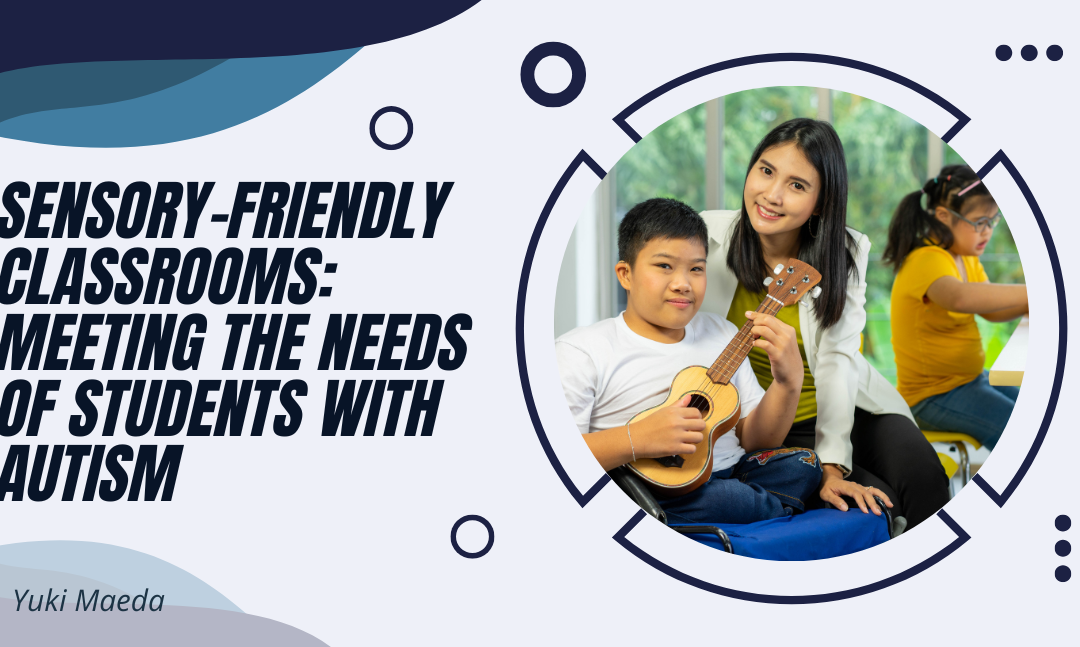Creating inclusive educational environments means recognizing and responding to the diverse needs of all learners, including those on the autism spectrum. One of the most crucial yet often overlooked components of this inclusivity is sensory support. Many students with Autism Spectrum Disorder (ASD) experience sensory processing differences that can significantly impact their ability to learn, focus, and feel comfortable in traditional classroom settings. Sensory-friendly classrooms are intentionally designed to accommodate these needs, promoting emotional regulation, engagement, and academic success.
Sensory processing refers to how the brain receives, interprets, and responds to information from the senses. While some students with autism are hypersensitive to sensory input—finding certain sounds, lights, or textures overwhelming—others may be hyposensitive and seek out additional sensory stimulation to stay alert or focused. Because sensory experiences vary widely among individuals with ASD, classroom environments must be flexible and adaptable.
One of the most common sensory triggers in classrooms is noise. Traditional learning environments are often full of unpredictable sounds—loud bells, scraping chairs, hallway chatter, or even background hums from lights and projectors. These sounds, while manageable to many students, can be extremely distressing to those with auditory sensitivities. Sensory-friendly classrooms address this by using noise-reducing materials like rugs, curtains, and soft furnishings. Teachers can also provide noise-canceling headphones or create quiet zones where students can take a break when overwhelmed.
Lighting is another important factor. Fluorescent lights, commonly used in schools, can flicker or buzz, which some students with autism perceive intensely. Replacing these with softer, natural lighting or LED bulbs can help minimize discomfort. Using adjustable lighting, like desk lamps or dimmers, allows students to control their own sensory input. In addition, using calming colors on the walls and in décor helps reduce visual overstimulation, contributing to a more serene learning environment.
Visual clutter is another often overlooked source of sensory overload. While bright posters, learning charts, and colorful bulletin boards are common in many classrooms, they can be distracting or overwhelming for students with sensory sensitivities. In a sensory-friendly classroom, displays are kept organized and minimal. Essential information is presented clearly and with consistency. Labeling areas and materials with both words and images helps students navigate the space with ease and confidence.
Tactile sensitivity is another key consideration. Some students with autism may be sensitive to textures found in common classroom materials such as carpets, chairs, or even clothing. Others may crave sensory input and benefit from textured materials like sandpaper, fidget toys, or fabric swatches. Providing a variety of seating options—like stability balls, bean bags, or textured cushions—allows students to find what works best for them. Sensory bins, weighted lap pads, and textured items can also be integrated into learning activities or offered during breaks.
Creating a calm-down area or sensory space within the classroom is a highly effective strategy. This dedicated area offers a safe, quiet space for students to retreat when feeling overwhelmed. It may include soft lighting, noise-reducing headphones, calming visuals, weighted blankets, or tactile objects. Importantly, students should be taught how and when to use this space so it supports regulation rather than serving as an escape from learning.
Flexibility is central to the sensory-friendly classroom. This includes not only physical adaptations but also a mindset shift in how teachers approach learning. Recognizing that students may need to stand, pace, or use movement breaks throughout the day allows them to regulate their bodies and emotions. Integrating sensory-friendly routines—such as a consistent schedule, visual instructions, and transitions with warning cues—supports students in feeling secure and prepared.
Collaboration with families and specialists enhances the success of sensory-friendly strategies. Parents can provide insight into their child’s specific sensory needs and preferences, while occupational therapists can offer tailored suggestions based on sensory profiles. Teachers and support staff benefit from ongoing training on sensory processing and practical strategies for classroom implementation.
The goal of a sensory-friendly classroom is not to eliminate all sensory stimuli but to create an environment that respects and accommodates sensory differences. When students feel comfortable and supported, they are better able to engage in learning, interact with peers, and develop confidence in their abilities.
Ultimately, sensory-friendly classrooms reflect a broader commitment to inclusion and equity. By designing environments that meet the needs of neurodiverse learners, educators create spaces where every student can thrive—not just those with autism, but all students who benefit from a calm, organized, and responsive classroom experience.

